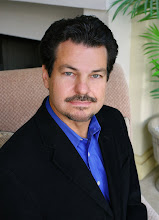
It is always fun to look at various technologies and notice where we are, understand where we have come from and grasp where we will be in the future! I was pondering this thought last week as I visited the Honeywell Windtronic plant and reviewed their new wind turbine (which we will start distributing this fall).
Electricity is strictly a price we pay for comfort and convenience. It is a “No-value” expenditure. It does not appreciate, nor depreciate. It is money lost. If you are currently spending an average of $200.00 a month on electricity and your usage remains the same over the next twenty five years (currently each household is utilizing 10% more electricity than they did 5 years ago) and the price increases at an annual rate of 5% (the cost of electricity over the last 10 years has more than doubled and is expected to more than double over the next 5 years) then you will have spent $250,000 over those 25 years.
In the United States we set the country up with a centralized approach for our energy needs. (Our alternating current power grid evolved after 1896, based in part on Nikola Tesla’s design and is 120 year old technology). This means we created power plants (coal, nuclear, hydro, etc.) and ran all of our power lines from these centralized locations. At the time, this seemed like a fairly wise decision. However, as other countries have developed and required the same energy needs we have enjoyed (such as China, India and Brazil), technology has been designed along the decentralized approach. These countries had never developed the infrastructure for telephone lines and electrical lines so they have enjoyed and taken advantage of the latest expertise. These countries skipped over the landline technology and went right to the cell phones at a substantial savings. This is occurring quite rapidly in the energy market with small decentralized electrical “plants”.
I believe we will see major changes in the United States over the next five years as we move from a centralized to more of a decentralized system. The utility companies as we have known them are operating on an old business model. In the future, they will need to switch from a provider of electricity to a distributor of electricity if they are to survive. Ten years from now most homes will have their own power source. We have watched changes in our homes before. There was a time not too long ago when a fan sufficed, however, there are very few homes built in the United States today without an air conditioning unit. This will be the same change we will experience with each homes’ power systems.
Coal plants currently generate 54% of our electricity and they happen to be the single biggest air polluter in the United States. Needless to say, we will not see any new Coal plants opening again. The last power plant to open in the United States was in 1996 in Spring City, Tennessee. It was a nuclear plant that started construction in 1973 and took almost 23 years to build and cost nearly 8 billion dollars. All of the centralized plants are very inefficient where only approximately 30% of the electricity generated actually make it to our homes.
Throughout the United States we are finalizing the “smart grid”. I will not go into depth on the definition of the smart grid but it can be researched in the United States Department of Energy’s Modern Grid Initiative Report. Most people have noticed the replacement of their electrical meter from the old magnetic one to the new digital meter. This is required for the “smart grid” system.
The way electricity is purchased and billed will change drastically over the next few years. The days of paying so much per kilowatt used is numbered. The future billing of electricity will be based on usage during various demand periods. We must set our homes up now to be prepared for the changes and save money. Simple things such as washing and drying clothes during off peak hours will save money without sacrificing too much convenience. However, electricity costs will continue to rise at a much faster pace than wages. Now is the time to invest in your own electrical power plant.







